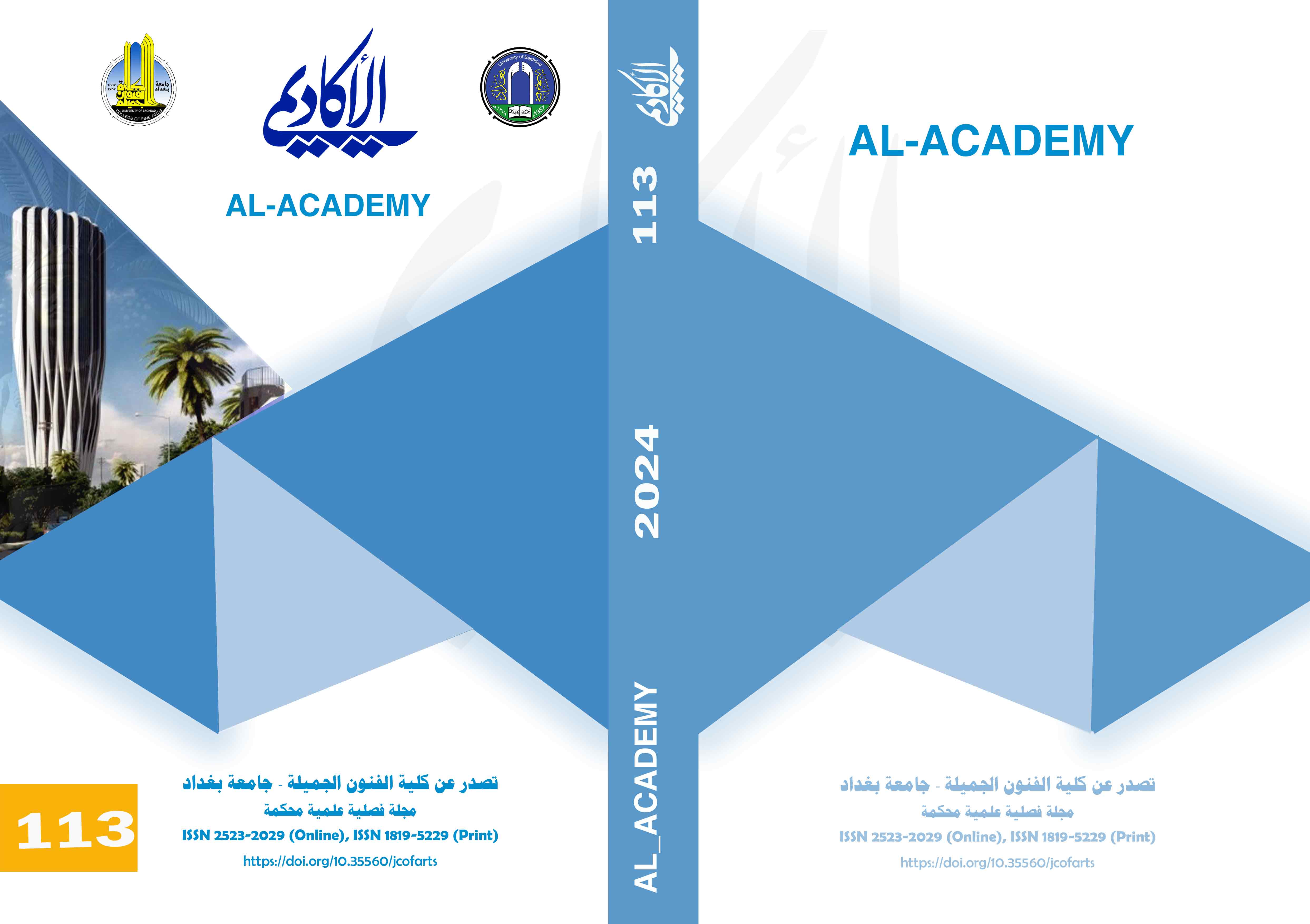Topological analysis of the industrial product body
DOI:
https://doi.org/10.35560/jcofarts1432Keywords:
Topology Routing LiquidityAbstract
Topology is concerned with studying design structures through different dimensions, which allows the designer to control the behaviors of those structures. Therefore, the concept of dimensions is considered one of the basics of the composition of the industrial product and its attempt to control the material in the design. Therefore, directing these dimensions is one of the tools of engineering topology. Which expresses a basic concept in the study of surfaces by distinguishing between what is external and internal.
Research problem: What are the modern technical methods applied with topological characteristics in designing the body of an industrial product?
Research goal: To reach the characteristics of topological formation techniques for the industrial product body.
The theoretical framework also included: identifying the nature of topology and the extent of its importance in the design system, what is the formal concept of the industrial product topology, and what are the most important techniques of topological design. The most important results and conclusions reached by the researcher were:
1-Flexibility is considered one of the most important characteristics of topological design within the dichotomy of stability and change, and then the characteristic of integration between the formal level and the functional level for shapes characterized by infinity, then comes the fluidity characteristic that takes into account the desire of the individual and changes with the change of time and place.
2-The techniques varied according to the diversity of characteristics, so folds and twists became a form of topological techniques that the designer deals with. There are no regular shapes, no defined edges and flat surfaces.
References
A. Sev, B. B. (2011). “A Recent Trend in Tall Building Design: Twisted Forms”, . e-Journal of New World Sciences Academy, vol. 6, no 4, .
Ali, M. &. (2007). Structural Developments in Tall Buildings: Current ،Trends and Future Prospects. Architectural Science Review, Vol. 50.3, Doi: 10.3763/asre.
Al-Yousef, I. J. (2017). Risala Al-Imara, Baghdad. Baghdad: Dar Al-Walaa for Printing and Publishing.
Chu. (2004). Metaphysies of genetic architecture and computation. Perspecta, vol. 35.
Cristofolini, L. ( 2015). In vitro evidence of the structural optimization of the human skeletal bones. J. Biomech., vol. 48, no. 5, .
Dunn, N. (2012). Digital fabrication in architecture. Laurence King Publishing.
Filiz Tavsana, E. S. (2015). Biomimicry in Furniture Design. ، ،Trabzon, Turkey: aKaradeniz Technical University, Faculty Of Architecture, Department Of Architecture, .
https://play.google.com/store/apps/details?id=com.pm_international&hl=ar&gl=US. (n.d.).
https://www.britannica.com/topic/liquidity-ratio . (n.d.).
J. ZHU, H. Z. (2021). A review of topology optimization for additive manufacturing: Status and challenges. Chinese J. Aeronaut: vol. 34, no. 1.
Kozlov, D. (2018). Knots as a Principle of Form in Modern Art and Architecture. 2nd . International Conference on Art Studies.
L. Beghini, A. B. (2014). Connecting architecture and engineering through structural topology optimization. Eng. Struct., vol. 59.
L. Cristofolini. ( 2015). In vitro evidence of the structural optimization of the human skeletal bones. : J. Biomech., vol. 48, no. 5.
Mohamed, B. R. (2015). The Concept of Alienation in Digital Architecture Design. Journal of Applied Arts and Sciences 2.
Musa, G. H. (2007). Introduction to Topology. Iraq: Dar Al Masirah for Publishing and Distribution.
Nowak, E. G. (2015). Verunsi tessellation in shaping the architectural form from fist rod structure. PhD Interdiscip. J., vol. 1.
Rashid, A. M. (2022). Topology in the formation of the contemporary architectural produc. IRAQ: Unpublished master’s thesis submitted to the Department of Architectural Engineering, University of Technology.
Salman, A. M. (21/06/2022). Topological analysis of architectural production in the Department of Architecture. Iraq, Baghdad,: Department of Architecture, University of Technology. Submitted: 08/09/2021 Accepted: 23/01/2022 Published: .
Downloads
Published
Issue
Section
License
Copyright (c) 2024 Liqaa Ghazi Hamad

This work is licensed under a Creative Commons Attribution 4.0 International License.













